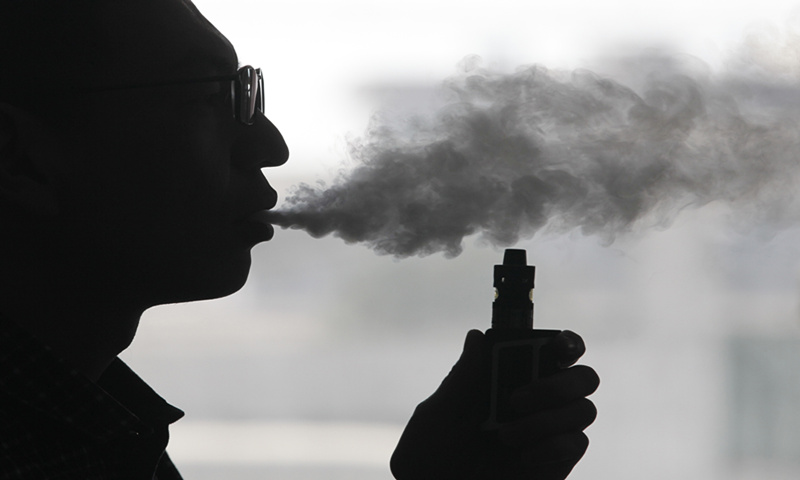
An e-cigarette smoker File photo: VCG
China Tobacco, the cigarette market supervisor, issued a document on its official website on Thursday requiring domestic e-cigarette manufacturers and traders to obtain a license before operating their business, further tightening the regulations for e-cigarettes. The new rules will be implemented from October 1, 2022.
As with the regulations for regular tobacco products, e-cigarettes cannot be sold to teenagers under 18, and the sale points cannot be near any kinds of schools or kindergartens. Warning signs must also be placed at the e-cigarette sale points, and self-service sales are banned.
Manufacturers, wholesalers and retailers of e-cigarettes, vaporizers and e-liquid are required to conduct their business on specific platforms that are subject to supervision. Relevant licenses and profiles should also be visible during transportation, read the document.
Advertising of e-cigarettes in mass media or in public places, public transportation, or outdoors is prohibited. The use of advertisements for other goods or services or advertisements that promote e-cigarettes are also prohibited. E-cigarette-related exhibitions, forums and fairs will also be prohibited, the document added.
Data from iiMedia Research Institute indicates that China's e-cigarette market will be worth 25.52 billion yuan ($3.57 billion) by the end of 2022, and it is estimated to expand to 45.43 billion yuan by the end of 2023.
In April, China's State Administration for Market Regulation approved mandatory national standards for e-cigarettes that will be effective from October 1, 2022. Analysts suggested that the official release of national standards for e-cigarettes means that there is a threshold for market access and a national mandatory quality standard, which is of great importance for protecting the rights and interests of minors and consumers.
